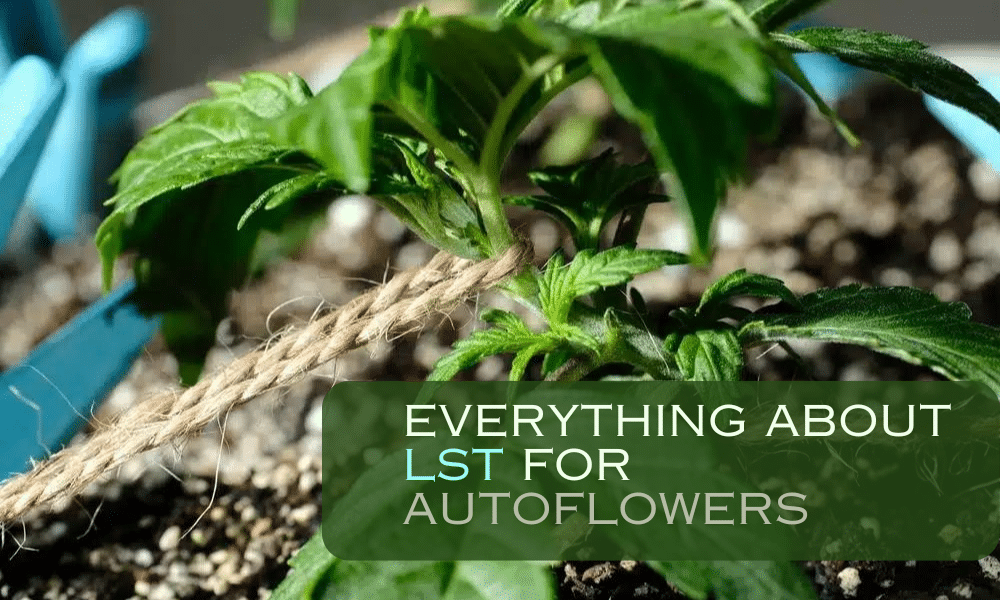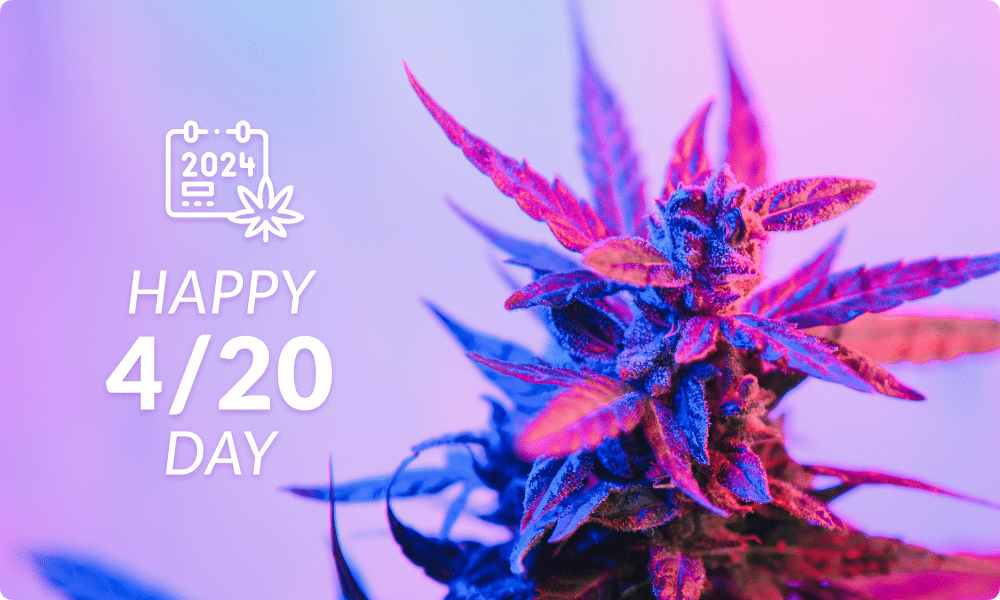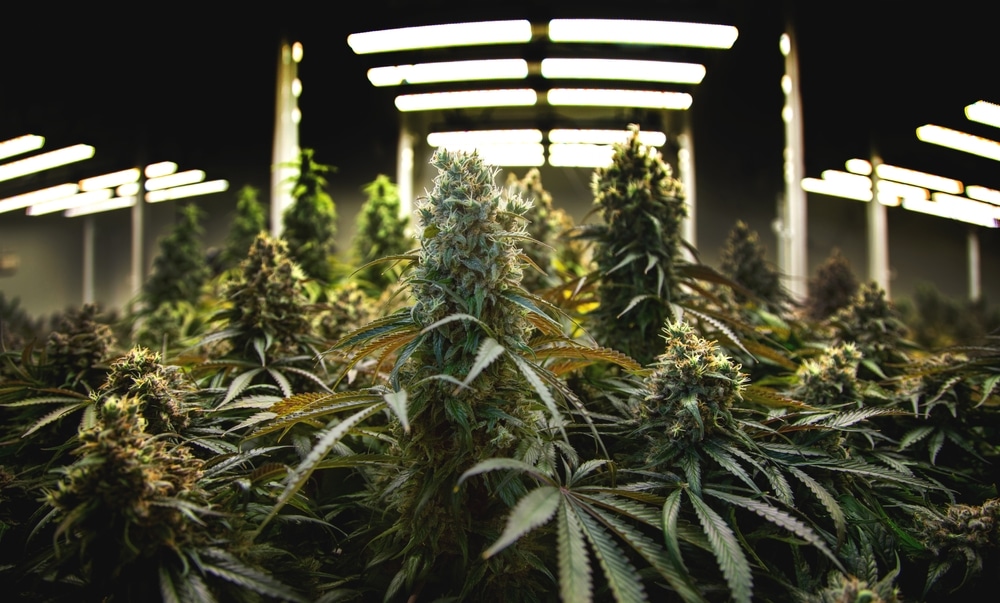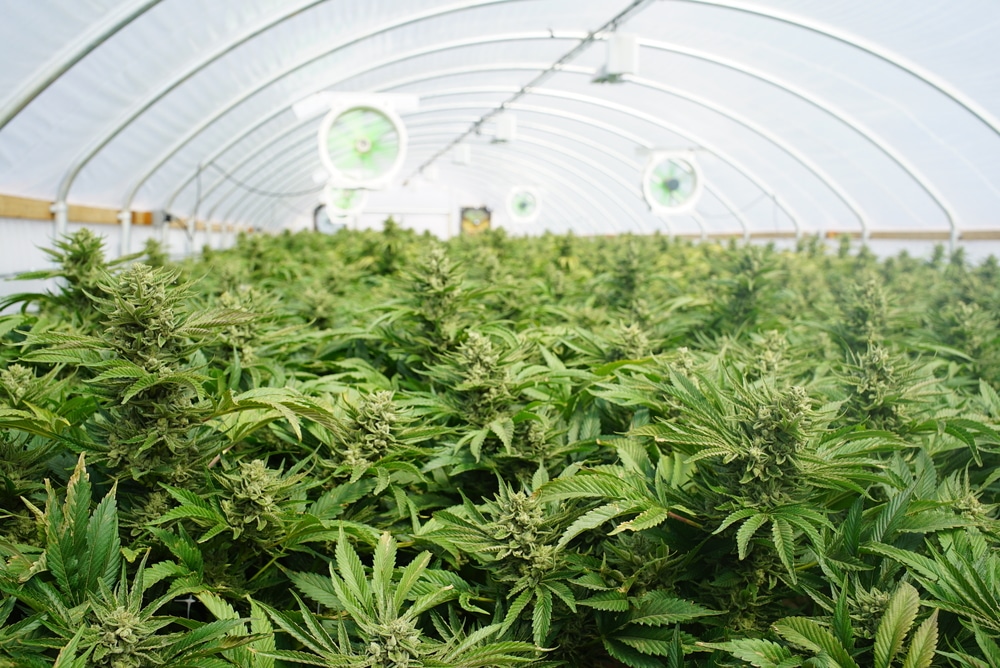No products in the cart.
Marijuana Education
Low-Stress Training (LST) Autoflowering Cannabis: When to Start, When to Stop, and How to Do
Some say plant training isn’t for autoflowers. But we say, “LST can do your autoflowers a lot of good.”
Autoflowers are definitely more prone to self-destructing when stressed, which is why growers avoid plant training autoflowers. But plant training doesn’t have to be stressful. Plant training methods like LST (low stress training) can improve your autoflower yields without overly stressing them.
This Seed Fair Growing Guide discusses how to LST Autoflowers without negatively triggering stress responses.
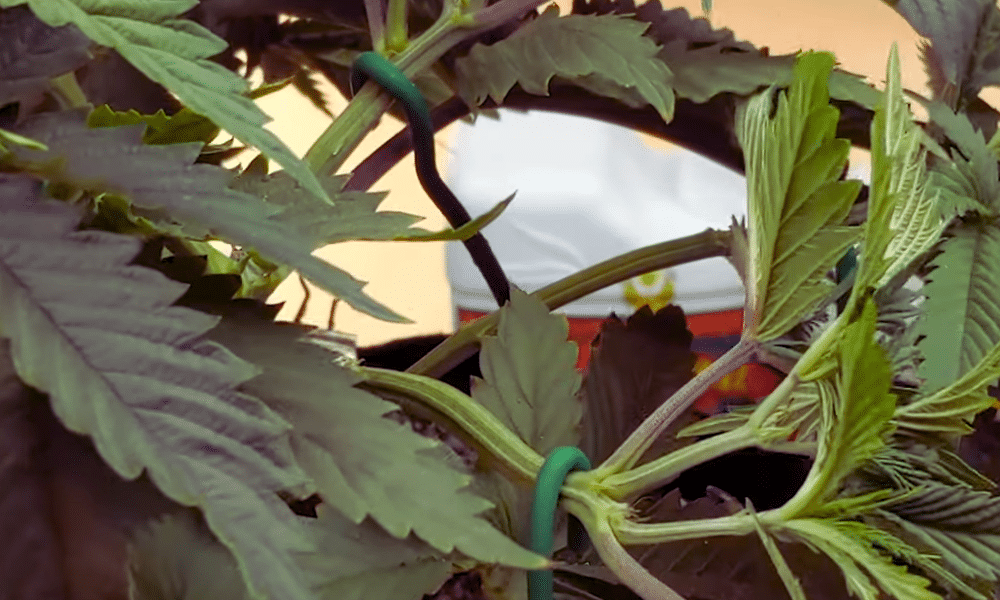
What is Low Stress Training?
Low-stress training is a plant training technique that allows you to get the most from your autoflowering seeds with the least amount of stress. LST is best suited for beginner growers and plants, like autoflowers, which do not tolerate cultivation mistakes or productivity stress.
Another great thing about low-stress training is that its results are mostly either positive or neutral. There is a very little chance of getting negative results with the technique. As a result, unlike HST, LST is suitable for most autoflowers.
LST is not one technique but a class of several techniques with a central goal: to maximize autoflower yields without temporarily or permanently stunting their development.
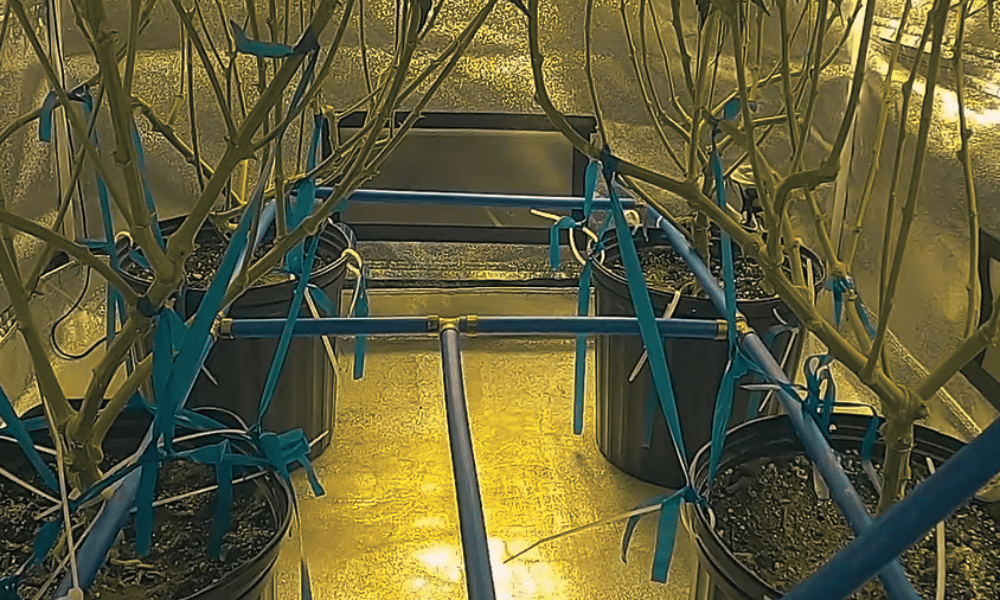
Is LST beneficial for your autoflowers?
100%. LST is beneficial for your autoflowers. While several factors go into getting the best autoflower yields, we’ve found that the ideal LST technique can take your yields from skinny cannabis plants to heavy, fat nugs.
We conducted a survey to find out how many growers notice significant improvements when they low-stress train their autoflowers. Of the 305 growers, 44.26% (n = 135) growers reported getting better autoflower yields using LST techniques, while 19.02% (n = 58) growers indicated no noticeable difference.
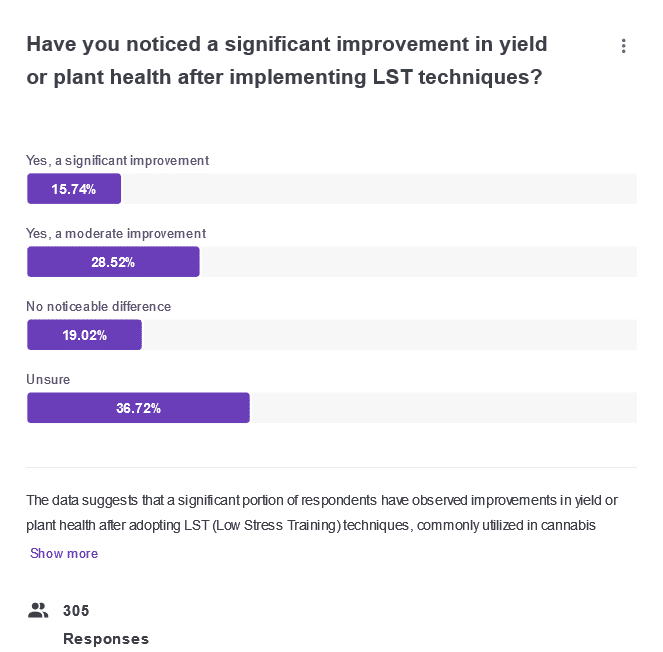
This response suggests that most autoflower growers are likely to get bigger results using LST techniques.
However, not all growers might consider the outcomes of this yield-boosting technique as perks. For the following reasons, some growers might choose not to LST autoflowers:
- Loss of the classic “Christmas tree” look (loss of the main cola)
- Bushier, denser canopies that require more maintenance
- Bushier, less visually appealing canopies
Again, the disadvantages of LST result from its advantages. Thus, if you’d like to increase your autoflower yields, then most experts and non-experts recommend LST autoflowers.
How Does LST Work?
When you flatten or spread out your canopy through an LST technique, you direct its development for an improved structure that allows better light and resource penetration to lower bud sites and branches. This structure sets your plant up for uniform healthy bud development, minimizes stretching, and controls even cultivation risks such as mold.
Without LST, your autoflowers overgrow as they reach towards and compete for resources. This event leads to skinny cannabis plant yields.
To avoid this, growers have two options. They either provide more than one light source or resource input to nourish every flowering site. Or, low-stress train their autoflowers to get available resources to every part.
Thus, low-stress training autoflowers is both yield-effective, relatively less expensive, and comparatively more energy-efficient.
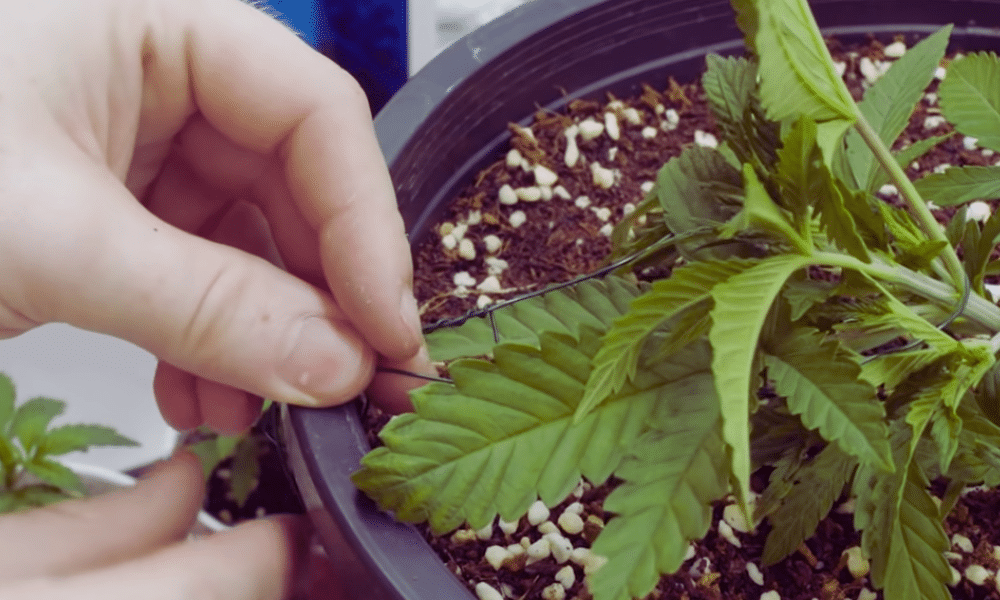
Types of LST
There are various LST techniques available for cannabis growers, but not all are suitable for autoflowers. Some LST techniques are so stressful to the point of being ideal High-stress techniques. Applying these techniques will likely trigger development stunts.
Some of these more stressful LST techniques include topping, fimming, and defoliation. These techniques do not fit well into the short autoflower life cycle. Only the Tie-Down method, Sea of Green (SoG), and Screen of Green (ScrOG) are ideal for growing autoflowers and breaking the barriers to fat nugs.
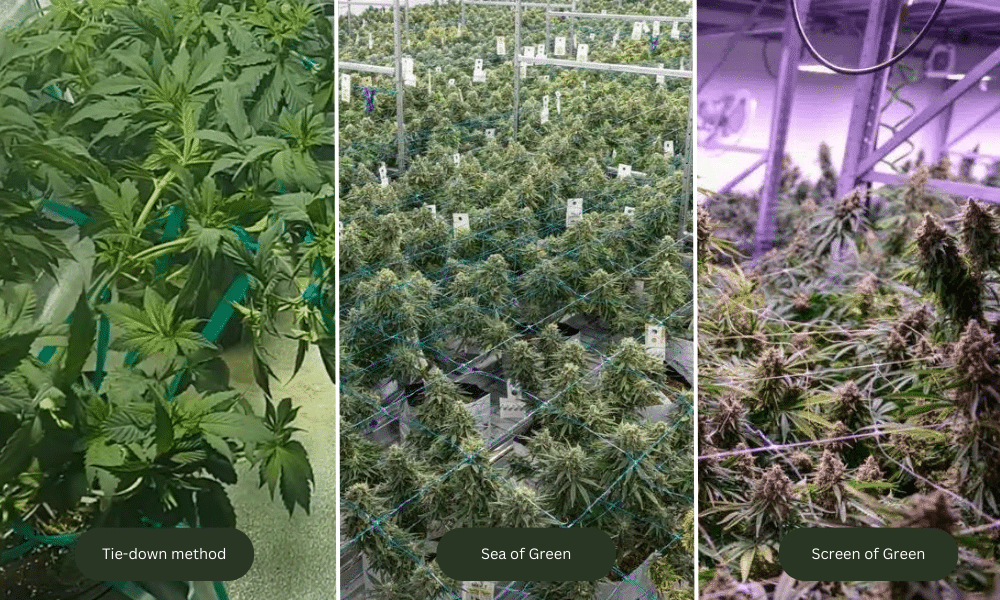
Screen of Green (ScrOG)
The Screen of Green (ScrOG) technique is a great way to maximize vertical space. This technique helps you avoid overgrowing cannabis by using a screen to maintain your canopy to the same height. Because the ScrOG method also spreads the branches apart to enable lower budding sites to get as much nourishment as the top buds, it controls cultivation risks like mold.
With the ScrOG method, genetics is essential. You want to pick strains of similar stature but preferably short strains with several flowering sites. Many growers prefer the ScrOG method because it is cost effective and a brilliant choice if you can only grow a few plants. The Screen of Green method gets you hefty yields with only a few plants.
Pros of the ScrOG Method
- Leads to denser buds at even lower flowering sites
- Requires only a few plants for heavy yields
- Offers structural support for the heavy buds
Cons of the ScrOG Method
- Requires significant initial setup
- Time-consuming maintenance
- Large screen makes it difficult to move the plant around
Sea of Green (SoG) Method
The Sea of Green (SoG) technique is quite the opposite of the ScrOG method. It encourages plant crowding. You want to get more plants with fewer bud sites to use the SoG method successfully. As a result, many growers use clones of the same mother plant to get their grow started.
The SoG method pretty much involves you letting the plant do its thing. There is not much plant training involved. As a result, it is a favorite for many beginner growers. However, some expert growers use cannabis topping to take out their apical buds and trick the plant into developing other bud sites.
Including cannabis topping with your Sea of Green process will definitely get you better results, if done correctly. But, it must be correctly done—or else you risk your entire plant yield. Thus, we advise growers to stay as clear of cannabis topping autoflowers as they can. It involves more risk.
Pros of the SoG Method
- Not much plant training needed
- Suitable for limited horizontal spaces
Cons of the SoG Method
- More plants mean more maintenance
- Knowledge of how to clone autoflowers might be needed
- Not a splendid choice for growers with plant limits
- Increased risk of mold, pests, and other diseases
- Limits you from mixing varieties in your grow space
Tie-Down Method
There might be nothing as the perfect LST technique but many growers agree that the Tie-Down method might just be the best LST technique there is. The Tie-Down method follows the very principle of plant training: form a relatively flat even canopy that exposes all flowering sites to adequate resources without excessive physical strain on the plant.
The Tie-Down method is suitable for all autoflower strains, indica and sativa, and is relatively easy to perform.
Pros of the Tie-Down Method
- Easy setup and maintenance
- Flexible control of your plant’s shape and height
- Encourages multiple bud production
- Requires minimal equipment and expertise
Cons of the Tie-Down Method
- Requires routine tie-down throughout the process
When to Start Low Stress Training On An Autoflower?
You should LST your autoflower at the early vegetative stage, around 2 to 3 weeks post germination. At this stage, it is much safer to bend your stems and branches because they are better developed yet pliable and soft enough to bend without breaking. Also, LST autoflowers at the vegetative stage set them up for uniform healthy bud development when they reach the flowering stage.
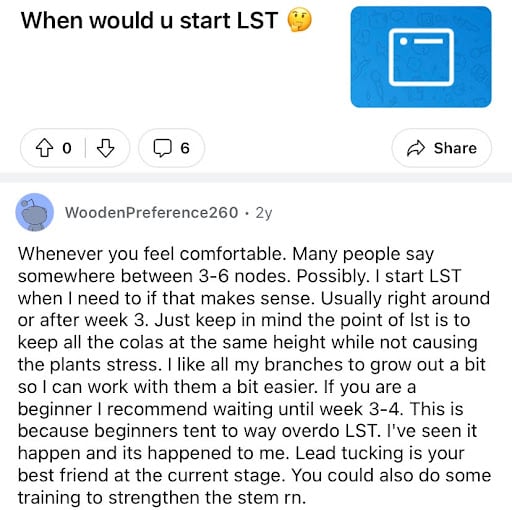
When to Stop Low-Stress Training Autoflowers?
You can repeat LST as your plant sprouts new growth, but you should stop low-stress training your autoflowers once they reach the pre-flowering stage. At the pre-flowering or flowering stage, the stems and branches of your autoflowers are more rigid and more prone to snapping when you bend them.
How to LST autoflowering plants: 3 methods step-by-step
With LST, there is really no definite way to train your autoflowers for the best yields. However, there are guidelines and best practices you should follow to ensure your plants avoid overstressing your plants and stunting their development. Here are some:
Method 1: Tie-down method
Materials Required:
- Gentle (rubber or rubber-coated) plant ties
- Drill or clips
- Strings or wires
- Bamboo stakes (optional)
- Autoflower seeds
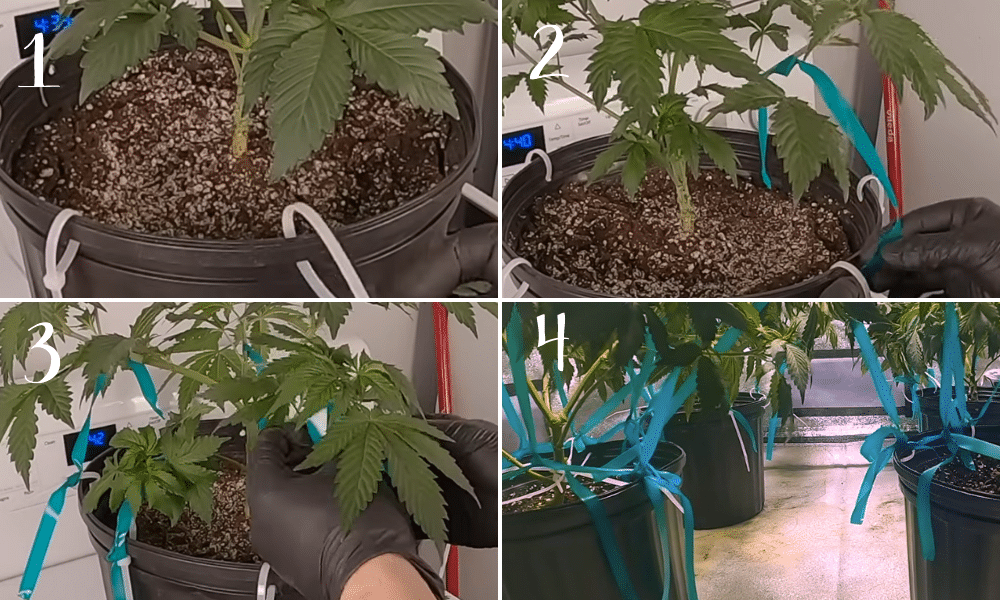
Step 1: Set Up your Pot
Using a fabric pot, attach the clips to its side to hold the string taut along the pot. With ceramic pots, clay, or plastic, use the drill to make holes around the rim to fasten the string.
Step 2: Provide Support
You can use the bamboo stake to support the plant further against the pull of the strings.
Step 3: Secure the Branches
Picking one main stem after the other, use the plant ties to spread the branches gently, guiding them horizontally away from each other.
Step 4: Monitor and Adjust
As your plant grows, its branches will want to grow vertically. Maintain their shape by keeping them tied down as long as possible.
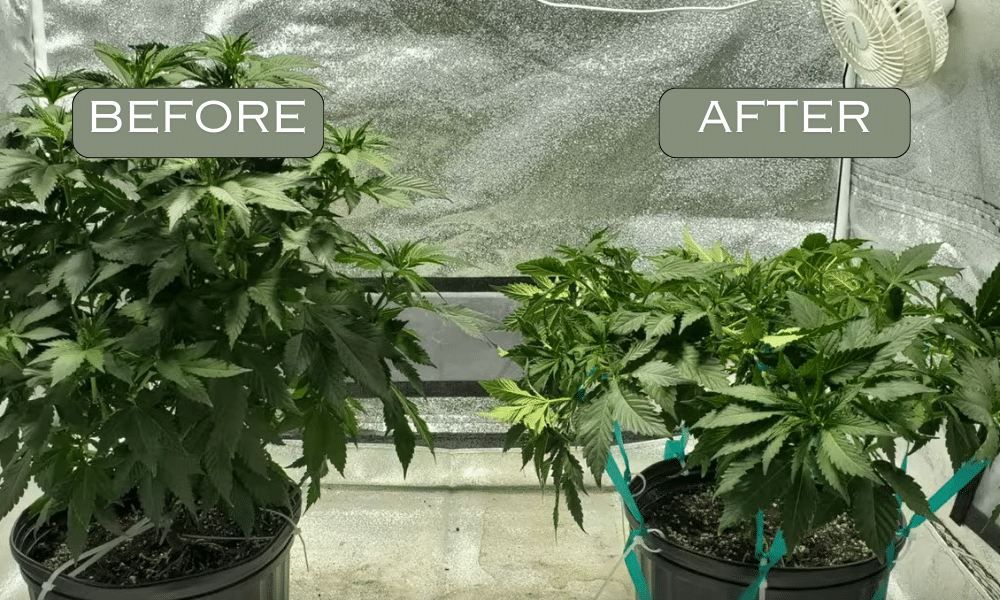
Method 2: Sea of Green (SoG)
Materials Required:
- Proper lighting, e.g. LED
- Netting
- Smaller sized pots (4-6L)
- Pruning shears
- Your autoflowers
Step 1: Check your Lighting
Ensure your choice of lighting is adequate to deliver sufficient heat and the ideal light spectrum consistently throughout your autoflower’s grow cycle. LEDs are usually the grow light of choice for most cannabis growers.
Step 2: Plant Your Autoflowers
Plant your autoflowers in small pots, ensuring each pot has proper drainage. You want to place them closely together; ideally, one pot per square foot of space, but not too close to avoid a cannabis overgrow.
Step 2: Install Netting
Because autoflowers grow with one main cola, you can further avoid your cannabis overgrowing and competing for resources by installing a netting that keeps each closely packed plant apart.
Step 3: Remove Side Branches
While side branches rarely develop with the SoG technique, some may, and you can gently defoliate these branches to focus your plant’s energy on its canopy and top cola. Defoliation also helps to improve airflow in and through your packed canopy.
Method 3: Screen of Green (ScrOG)
Materials Required:
- A screen or trellis with 2 to 4-inches squares
- Sturdy poles or frames to attach the screen or trellis (optional)
- Proper lighting
- Gentle plant ties
- Pruning shears
- Autoflower seeds
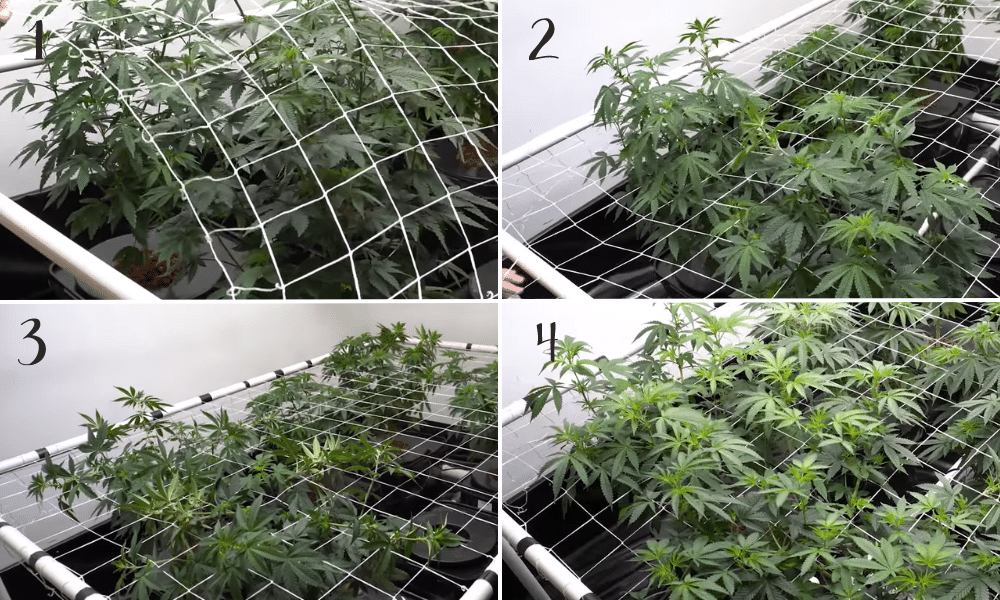
Step 1: Get a suitable screen or trellis
You can buy or DIY your screen/mesh from hemp ropes, washing lines, bamboo, or fine wire.
Step 2: Set Up the Screen
Securely install the screen or trellis approximately 20 to 30 cm above your plants, attaching it to the poles or frames or suspending it from sturdy overhead fixtures. The screen should be sturdy enough to support the projected weight of your mature autoflowers.
Step 2: Position the plant
Provide approximately 30 by 30 cm per plant or 1 to 5 plants per square meter to ensure your plants have enough space for horizontal growth.
Step 3: Monitor Growth
As your plants reach the screen, spread the main branches apart, gently securing each one to the squares of the screen with plant ties to make a “plant carpet.”
Step 4: Prune Selectively
As your canopy blooms, you might notice some leaves or branches are not receiving as much light. Gently use the pruning shears to trim these parts away to maximize your plant’s energy.
Step 5: Monitor and Adjust
Monitor your plants as they grow, weaving the branches through the screen so the canopy remains even. Adjust the ties as needed and repeat each stage as necessary.
Best strains for LST
LST might have been a means of height control, but the compact, bushy indicas are taking the lead as the better strains for LST. The short internodal spacing of the indica strains provides multiple bud sites for numerous bud development. As such, indica strains are better autoflowers for LST. Below are three of our favorite indica autoflower varieties to try LST with.
- Willy’s Wonder Autoflower: Willy’s Wonder Autoflower (or William’s Wonder Autoflower) is an Indica-dominant autoflowering strain suitable for indoor growing. We consider Willy’s Wonder Autoflower one of the best strains for LST because it grows up to 3.5 ft. yet produces bushy canopies. Proper LST can get you indoor yields of up to 350 g/m2 with this strain. Outdoors, the same can get you up to 350 grams per plant.
- Sweet Baby Jane Autoflower: Sweet Baby Jane is a resilient indica-dominant autoflower suitable for indoor and outdoor growing. We consider this strain one of the best strains for LST because it grows up to 5 ft. yet is ideal for tight spaces, providing enough room for lateral branch development. With proper LST, expect indoor yields of up to 350 g/m2 with this strain and outdoor yields of up to 350 grams per plant.
- Thin Mint Autoflower: Thin Mint Autoflower takes quite the turn from what we know works best with LST: It combines indica and sativa genetics in a 50/50 ratio. Thin Mint Autoflower is one of our best strains for LST because it grows up to 8 ft. with a bushy canopy. With proper LST, the balanced hybrid produces about 200 g/m2 indoors and 300 grams per plant outdoors. Many expert growers recommend the Sea of Green (SoG) technique for Thin Mint Autoflower.
Conclusion
Contrary to past fears, autoflower growers can safely and successfully train their plants to get bigger yields. Each LST technique might come with its unique approach, perks, and considerations, but don’t be scared. Even when you do not do it right the first time, you’ll still get decent yields. Just make sure you avoid more high-stress add-ons like topping and do not LST in the flowering or pre-flowering phase.
FAQ section
How long should I low-stress train Autoflowers?
You should low-stress train autoflowers for as long as you can in the vegetative phase, about 3 to 4 weeks.
Does LST increase yield?
Yes, it does. Spreading out your plant’s canopy encourages more bud site development for healthier, denser buds.
Is LST or topping better?
Some growers merge cannabis topping with certain LST techniques, like the Sea of Green method, to lose the apical bud. However, properly topping your autoflower requires extreme skill, knowledge, and experience. You should only top if absolutely necessary.


